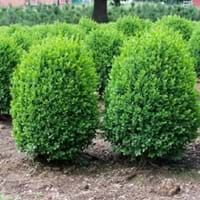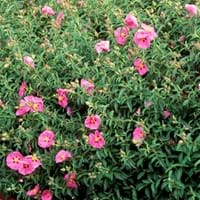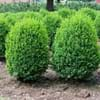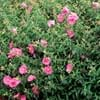Life Span
Perennial
Perennial
Type
Broadleaf Evergreen
Shrub
Origin
Europe, Southern Europe, Turkey, Northern Africa
Hybrid origin, Southern Europe
Types
Elegantissima boxwood, Latifolia Maculata boxwood
White Rock Rose, Cistus Alyssoides, Cistus Bourgaeanus
Number of Varieties
Not Available
Habitat
Sandy areas, Temperate Regions
Banks, Dry areas, Gravels, meadows, Pastures, Riverbanks
USDA Hardiness Zone
5-8
9-10
AHS Heat Zone
Not Available
-9999
Sunset Zone
21,22
7, 8, 9, 12, 13, 14, 15, 16, 17, 18, 19, 20, 21, 22, 23, 24
Habit
Oval or Rounded
Spreading
Flower Color
Yellow green
Magenta
Flower Color Modifier
Bicolor
Not Available
Fruit Color
Not Available
Not Available
Leaf Color in Spring
Green
Green
Leaf Color in Summer
Dark Green
Green
Leaf Color in Fall
Dark Green
Green
Leaf Color in Winter
Olive, Dark Green, Bronze
Green
Leaf Shape
Elliptic
Elliptic
Plant Season
Spring, Summer, Fall, Winter
Spring, Summer
Sunlight
Full Sun, Partial Sun
Full Sun, Partial Sun
Type of Soil
Loam, Sandy
Clay, Loam, Sand
The pH of Soil
Acidic, Neutral
Acidic, Neutral
Soil Drainage
Sandy
Well drained
Bloom Time
Late Spring
Early Spring, Spring, Late Spring
Tolerances
Not Available
Drought
Where to Plant?
Ground
Container, Ground, Pot
How to Plant?
Leaf Cutting, Stem Cutting, stem tip cuttings
Seedlings
Plant Maintenance
Medium
Medium
Watering Requirements
Do not water frequently
occasional watering once established
In Summer
Lots of watering
Lots of watering
In Spring
Moderate
Moderate
In Winter
Average Water
Average Water
Soil pH
Acidic, Neutral
Acidic, Neutral
Soil Type
Loam, Sand
Clay, Loam, Sand
Soil Drainage Capacity
Well drained
Well drained
Sun Exposure
Full Sun, Partial Sun
Full Sun, Partial Sun
Pruning
A hard prune may be necessary if the plant becomes woody, Cut away fading foliage, Prune if you want to improve plant shape, Remove damaged leaves, Remove dead branches, Remove dead leaves
Remove damaged leaves, Remove dead branches, Remove dead leaves
Fertilizers
Compost, fertilize in growing season
Doesn't require fertilization when grown in rich soil
Pests and Diseases
Mildew, Mites, Red blotch
Botrytis Blight, Powdery mildew, Sooty Mold, Verticillium Wilt
Plant Tolerance
Salt and Soil Compaction, Shallow soil
Drought
Flowers
Insignificant
Showy
Flower Petal Number
Single
Single
Fragrant Bark/Stem
No
Yes
Foliage Texture
Fine
Medium
Foliage Sheen
Glossy
Matte
Attracts
Caterpillar, Early/Late Blight, Mites, Spider Mites
Hummingbirds, Butterflies
Allergy
Eye irritation, Skin irritation
no allergic reactions
Aesthetic Uses
Not Used For Aesthetic Purpose
Showy Purposes
Beauty Benefits
Blackheads, Good Cleanser, Makes Hair Silkier
Perfumes
Environmental Uses
Air purification, Erosion control, Provides ground cover
Air purification
Medicinal Uses
Dermatitis, epilepsy, Treating fever
No Medicinal Use
Part of Plant Used
Bark, Leaves
Whole plant
Other Uses
Decoration Purposes, Showy Purposes, Used to make chess pieces
Oil is used for aromatherapy, Used as Ornamental plant
Used As Indoor Plant
No
No
Used As Outdoor Plant
Yes
Yes
Garden Design
Bonsai, Edging, Espalier, Foundation, Hedges, Rock Garden, Wall
Foundation, Mixed Border
Botanical Name
Buxus sempervirens
CISTUS x pulverulentus 'Sunset'
Common Name
English boxwood
Rock rose
In Hindi
European boxwood
रॉक गुलाब
In German
Gewöhnlicher Buchsbaum
Zistrose
In French
Buis commun
ciste
In Spanish
boj común
jara
In Greek
European boxwood
Rock Rose
In Portuguese
Buxo
esteva
In Polish
Bukszpan wieczniezielony
skała róży
In Latin
European boxwood
CISTHOS
Phylum
Tracheophyta
Not Available
Class
Magnoliopsida
Not Available
Family
Buxaceae
Cistaceae
Clade
Angiosperms, Eudicots
Angiosperms, Eudicots, Rosids
Tribe
Not Available
Not Available
Subfamily
Not Available
Not Available
Season and Care of English Boxwood and Rock rose
Season and care of English Boxwood and Rock rose is important to know. While considering everything about English Boxwood and Rock rose Care, growing season is an essential factor. English Boxwood season is Spring, Summer, Fall and Winter and Rock rose season is Spring, Summer, Fall and Winter. The type of soil for English Boxwood is Loam, Sandy and for Rock rose is Clay, Loam, Sand while the PH of soil for English Boxwood is Acidic, Neutral and for Rock rose is Acidic, Neutral.
English Boxwood and Rock rose Physical Information
English Boxwood and Rock rose physical information is very important for comparison. English Boxwood height is 90.00 cm and width 90.00 cm whereas Rock rose height is 50.80 cm and width 90.00 cm. The color specification of English Boxwood and Rock rose are as follows:
English Boxwood flower color: Yellow green
English Boxwood leaf color: Green
Rock rose flower color: Magenta
- Rock rose leaf color: Green
Care of English Boxwood and Rock rose
Care of English Boxwood and Rock rose include pruning, fertilizers, watering etc. English Boxwood pruning is done A hard prune may be necessary if the plant becomes woody, Cut away fading foliage, Prune if you want to improve plant shape, Remove damaged leaves, Remove dead branches and Remove dead leaves and Rock rose pruning is done Remove damaged leaves, Remove dead branches and Remove dead leaves. In summer English Boxwood needs Lots of watering and in winter, it needs Average Water. Whereas, in summer Rock rose needs Lots of watering and in winter, it needs Average Water.





